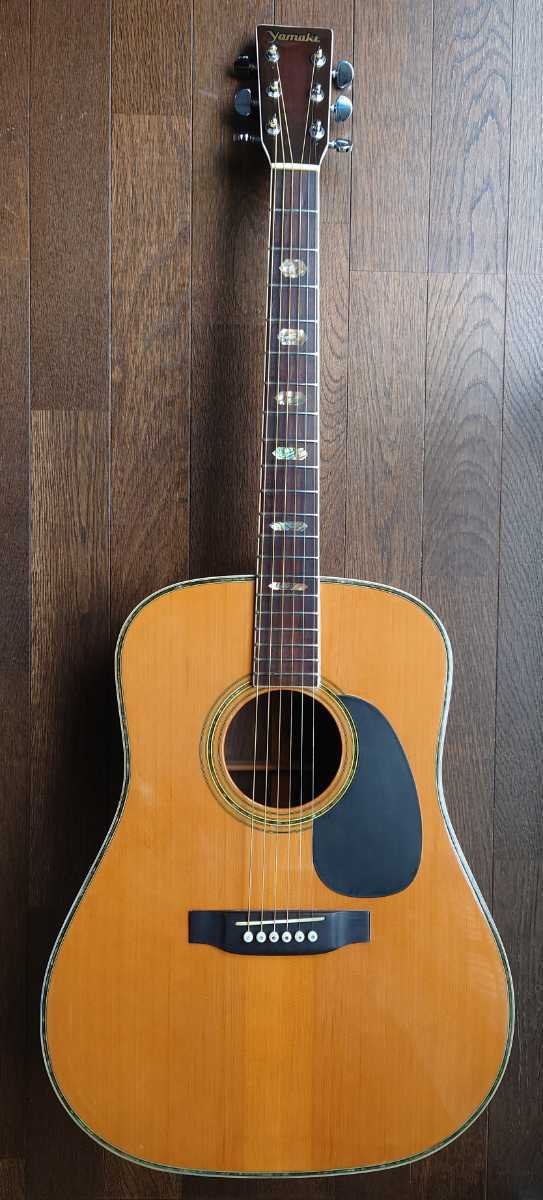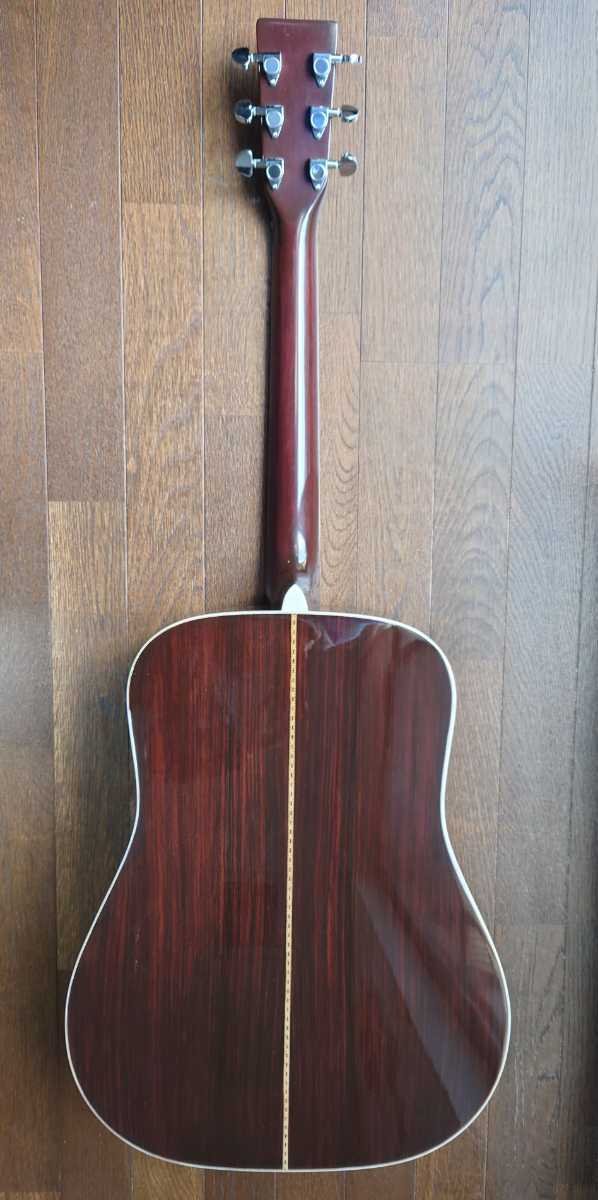You are using an out of date browser. It may not display this or other websites correctly.
You should upgrade or use an alternative browser.
You should upgrade or use an alternative browser.
Yamaki YW-51 I scored on the Japanese auc
- Thread starter Rambozo96
- Start date
Guildedagain
Enlightened Member
Looks like you held out for a really good one.
Which model is it?
Which model is it?
SFIV1967
Venerated Member
Rambozo96
Senior Member
The YW-51 which has a solid spruce top and I’m guessing laminated back and sides. I guess it was their take on the dressier looking MartinsLooks like you held out for a really good one.
Which model is it?
Guildedagain
Enlightened Member
Right. One of those odd numbers, I'm thinking maybe later 70's than mine.
This one is king of the hill here.
Here it is flanked by a LaPatrie that only gets better with time and D35.

This one is king of the hill here.
Here it is flanked by a LaPatrie that only gets better with time and D35.
Guildedagain
Enlightened Member
I think the back and sides are very often lam = no cracks ever = because the outside wood is too fine to use in solid sheets.
It's actually a million times harder to make a decent lam than it is to use wood direct from a tree.
For me, the way to tell if one of these Japan beauties is solid or lam on top and looking at the top grain at an angle in good window light. On a lam top, you'll see the sideways striations of the wood sandwiched between the two plies.
My Sango Guild look alike is a ply top, but exquisite spruce on the outside, and a very pretty spruce on the inside, much wider grained, almost red. So in between is a layer of something, I'm not sure what, a crossways layer of spruce I imagine because there is no color variation at the soundhole indicating three plies, and in fact it could fool people looking at it like that.
Just look at the whole top.
On a solid top with some aging, you can make out the braces.
On a lam top with some aging, you can see the crossply.
Sango
Time after time I look a these two beasts I bought just to check out, and when it comes to thinning the herd, I can't let go.




That's actually a really nice Rosewood veneer on the peghead, bound, really very sweet. Same tuners as on D25/D35 of the era.
It's actually a million times harder to make a decent lam than it is to use wood direct from a tree.
For me, the way to tell if one of these Japan beauties is solid or lam on top and looking at the top grain at an angle in good window light. On a lam top, you'll see the sideways striations of the wood sandwiched between the two plies.
My Sango Guild look alike is a ply top, but exquisite spruce on the outside, and a very pretty spruce on the inside, much wider grained, almost red. So in between is a layer of something, I'm not sure what, a crossways layer of spruce I imagine because there is no color variation at the soundhole indicating three plies, and in fact it could fool people looking at it like that.
Just look at the whole top.
On a solid top with some aging, you can make out the braces.
On a lam top with some aging, you can see the crossply.
Sango
Time after time I look a these two beasts I bought just to check out, and when it comes to thinning the herd, I can't let go.
That's actually a really nice Rosewood veneer on the peghead, bound, really very sweet. Same tuners as on D25/D35 of the era.
Last edited:
Rambozo96
Senior Member
I suspect that Guild copy is made by Kiso Suzuki which was a violin manufacturer in Japan. From what I understand very exquisite guitars. I have an all lam Yamaha FG-150 that sounds better than it has any right to. I wonder how they did it. I heard rumors that Yamaha used high quality woods for the laminations but it’s all rumors. No damning evidence of that claim.I think the back and sides are very often lam = no cracks ever = because the outside wood is too fine to use in solid sheets.
It's actually a million times harder to make a decent lam than it is to use wood direct from a tree.
For me, the way to tell if one of these Japan beauties is solid or lam on top and looking at the top grain at an angle in good window light. On a lam top, you'll see the sideways striations of the wood sandwiched between the two plies.
My Sango Guild look alike is a ply top, but exquisite spruce on the outside, and a very pretty spruce on the inside, much wider grained, almost red. So in between is a layer of something, I'm not sure what, a crossways layer of spruce I imagine because there is no color variation at the soundhole indicating three plies, and in fact it could fool people looking at it like that.
Just look at the whole top.
On a solid top with some aging, you can make out the braces.
On a lam top with some aging, you can see the crossply.
Sango
Time after time I look a these two beasts I bought just to check out, and when it comes to thinning the herd, I can't let go.




That's actually a really nice Rosewood veneer on the peghead, bound, really very sweet. Same tuners as on D25/D35 of the era.
Guildedagain
Enlightened Member
I think the Sango is Matsumoku actually?
SFIV1967
Venerated Member
Guildedagain
Enlightened Member
It's not really in the same league as the Yamaki, not the one I have anyway, but there are many lower end Yamakis under mine.
bobouz
Senior Member
- Joined
- Jan 29, 2015
- Messages
- 2,277
- Reaction score
- 1,879
There were so many good early Japanese examples. This one is my minty 1981 Ibanez M-340, with a fully laminate spruce & maple body. One of the keys to it’s satisfying tone has got to be the very thin top, with the Japanese taking full advantage of how thin you could go, given the inherent strength that exists in laminate construction. Aesthetically, it also happens to have one of my favorite (rather Guildish) headstocks ever! Truss rod adjustment is accessed via the soundhole.


Rambozo96
Senior Member
That would make sense. I seem to remember that the worst sounding laminate acoustics I played were on the heavy side which would suggest thick tops and heavy bracingThere were so many good early Japanese examples. This one is my minty 1981 Ibanez M-340, with a fully laminate spruce & maple body. One of the keys to it’s satisfying tone has got to be the very thin top, with the Japanese taking full advantage of how thin you could go, given the inherent strength that exists in laminate construction. Aesthetically, it also happens to have one of my favorite (rather Guildish) headstocks ever! Truss rod adjustment is accessed via the soundhole.




